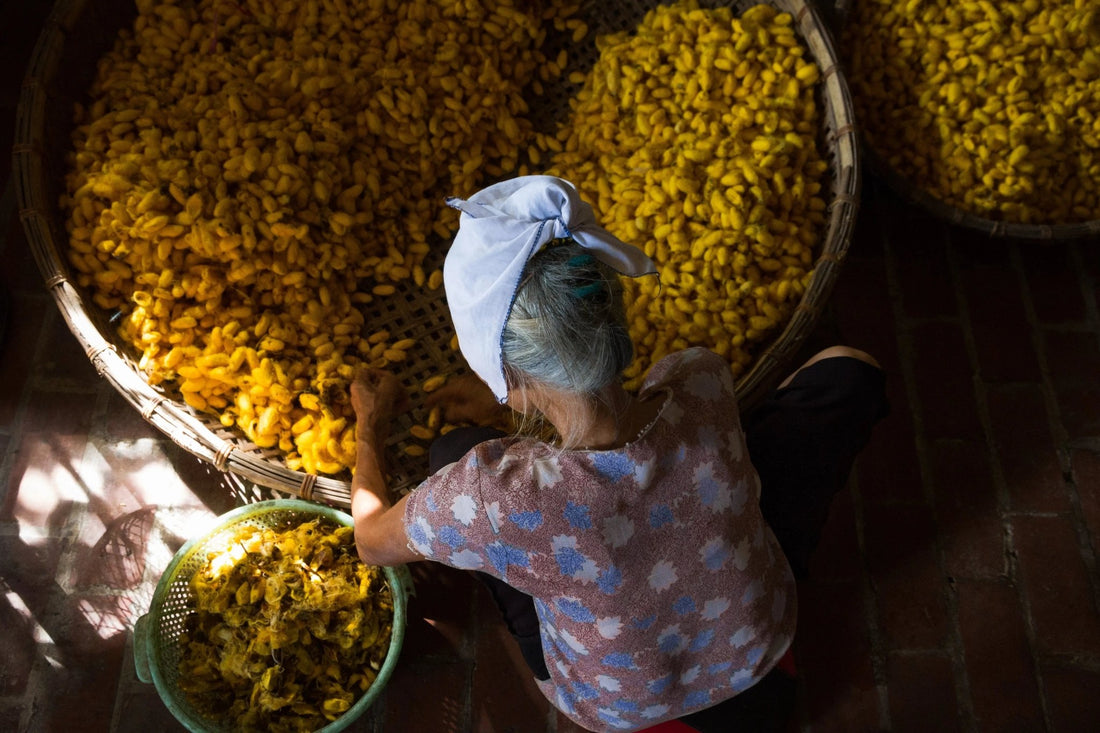
Silk: A Luxurious Legacy
Share
Silk, the precious fabric that has fascinated civilisations for millennia, continues to exert its fascination today, despite its often high price. But what makes silk so special and why does it often cost more than other fabrics on the market?
Firstly, silk is not just a textile, it is a cultural heritage. Its history dates back more than 5000 years in China, where it was once reserved for royalty and the aristocracy. This tradition of silk production, passed down from generation to generation, has helped to maintain its high value to this day. Each silk thread is the result of a complex and meticulous process that requires unique craftsmanship.
But it's not just its glorious past that justifies the high price of silk. Its extraordinary properties make it a sought-after and prized fabric. Silk is renowned for its unparalleled softness, lightness and natural lustre. It is also thermoregulatory, meaning it can keep you cool in the summer and warm in the winter, ensuring optimal comfort all year round.
Silk also offers a sense of luxury and elegance that few other fabrics can match. Its smooth and silky texture is pleasing to the touch, while its rich and vibrant colours add a touch of sophistication to any garment or accessory.
Of course, the rarity of the raw material and the complexity of the manufacturing process also help to maintain the high price of silk on the market. Silkworms, which produce the precious silk fibres, require special living conditions and food, making them a relatively rare and expensive resource.
Ultimately, the high price of silk reflects its intrinsic value, rich history and unique properties. While some may consider silk an unattainable luxury, for many it remains a valuable investment in quality, style and lifestyle.
